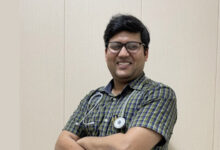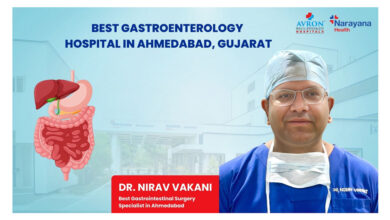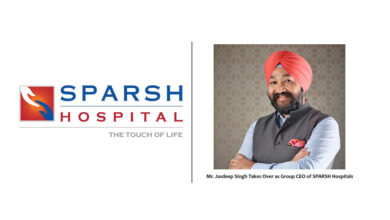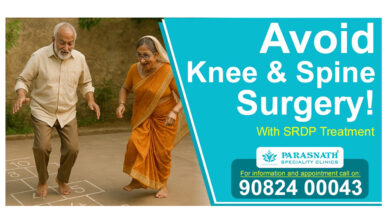Dr. Jagdish Sakhiya raises awareness, discuss significance, symptoms and treatment about Vitiligo

-
Vitiligo is a non-contagious skin disease that causes long-term white patches on the skin.
-
World Vitiligo Day is observed on 25th June, to increase awareness about the disease.
Surat, Gujarat: Dr. Jagdish Sakhiya, a chief dermatologist at Sakhiya Skin Clinic and Chairperson of IADVL MEDIA CELL was involved in increasing and spreading awareness towards the social stigma against Vitiligo in various ways and did a live session on social media handles to break myths and barriers on vitiligo.
Vitiligo has certain myths associated around it. Due to social stigma, vitiligo has affected the mental health of many patients and caused low self-esteem & confidence.
‘The World Vitiligo Day, observed on 25th June, aimed to build global awareness. Awareness is fundamental step for transformation and we are here to transform lives of people by taking care of their skin and guiding them in this journey. So, as a dermatologist since 2 decades and IADVL member, we created awareness about Vitiligo on World Vitiligo day, 25th June.’ says Dr. Sakhiya.
Vitiligo is a longtime skin disease in which there’s a loss of skin color pigment and develops pale white patches on the skin. These patches usually enlarge with time. This can affect any part of the body but the most common areas are the neck, hand, and face. It can also develop in the hair & inside of the mouth.
Dr. Sakhiya explained reasons that cause vitiligo:
Autoimmune Condition, Heredity, Stress / Sun Damage Emotional distress, sunburn, or skin damage can also cause Vitiligo.
Even the pigmented cells can be destroyed when they come in contact with a few chemical substances or toxins. Apart from this, unhealthy lifestyle, unhealthy eating habits, pollution, dirt are also few reasons that can affect the development of vitiligo.
Vitiligo doesn’t affect any physical or health conditions but appearance.
Dr. Jagdish Sakhiya also explained various symptoms of Vitiligo.
The most prevalent symptom is white patches on the skin. It may appear on any part of the body and is visible as small, large, or confetti-like patches.
Treatments Available for Vitiligo :
‘Early treatment is the best treatment.’ Dr. Sakhiya says that if the diagnosis is delayed, it becomes a little difficult to treat the severe conditions. Vitiligo is a permanent disorder. Treatment generally aims at restoring the color balance, while some add pigments others may remove it. Treatments are suggested once the doctor examines the skin condition thoroughly as it varies in different types, conditions, and severity.
Due to advancements in science & technology, there has been constant addition to treating diseases. It is difficult but not impossible.
Although treatments may restore the pigmentation, they may not necessarily last forever.
Surgical treatments are also available but are advisable when the medications are not showing desired results. Some of the surgical treatments are –
- skin grafting
- Cellular Suspension Transplant
- Pigmenting skin with tattoo ink.
Dr Jagdish Sakhiya suggested few things that should be considered for Vitiligo Treatment.
Medication, Skin Hydration, Avoid skin trauma & injuries, Sun Protection, Cosmetic Help and Managing stress
Vitiligo may not affect the physical health of the person neither it’s transferable but it may definitely cause low self-esteem or even confidence. Adolescents or youth generally develop emotional stress due to vitiligo.
Dr Jagdish Sakhiya suggested Dietary Tips For Vitiligo:
As per the experience & observation, Dr. Sakhiya stated the following tips that are beneficial for vitiligo patients.
– Stay hydrated, Include fruits & vegetables in your diet, Avoid preservatives & packaged food, Increase the intake of food rich in proteins, vitamins & nutrients, limit the consumption of yeast & related products & also limiting the sour food can also help vitiligo.
Lastly, Dr. Jagdish Sakhiya concludes by saying that Vitiligo is a common skin disease and it does not spread and is not contagious. It is important to accept the condition as a medical condition and support the individual.














